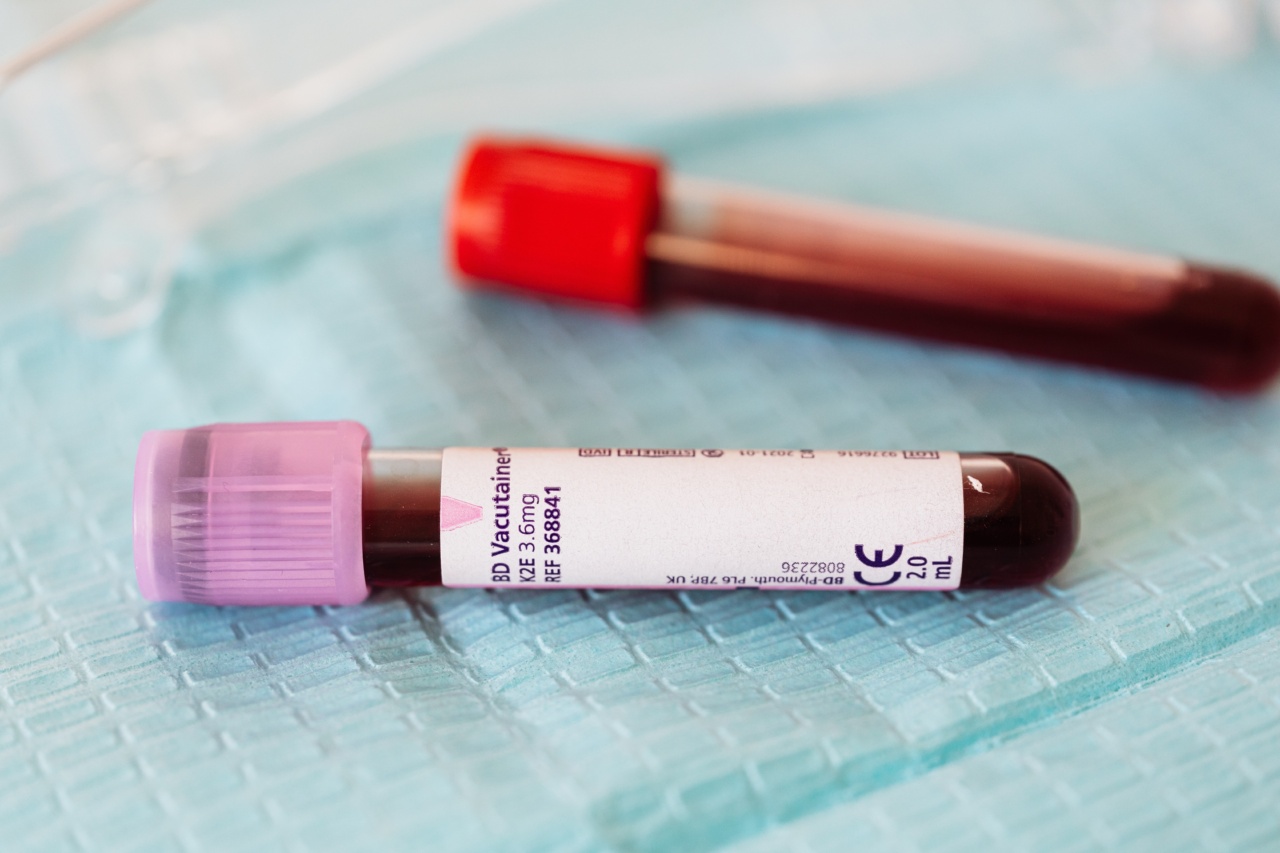Cancer is a deadly disease that affects millions of people worldwide. Early detection is crucial for increasing the chances of successful treatment and improving patient outcomes.
However, current cancer detection methods, such as biopsies and imaging tests, can be invasive, time-consuming, and expensive. Furthermore, these methods may not always provide accurate results, leading to delays in diagnosis and treatment.
Therefore, there is an urgent need for a better cancer detection method that is quick, affordable, and reliable. Scientists and researchers have been tirelessly working to develop innovative solutions to this problem.
One such groundbreaking development is a new blood test that holds remarkable potential in revolutionizing cancer diagnostics.
Introducing the New Blood Test
The new blood test, known as [Insert Test Name], has shown incredible promise in quickly and cheaply detecting various types of cancer.
This test analyzes a small sample of blood to identify specific biomarkers that indicate the presence of cancer cells in the body. These biomarkers can include specific proteins, genetic mutations, or other molecular signatures associated with different types of cancer.
Unlike traditional cancer detection methods, the new blood test is non-invasive and can be easily performed in a doctor’s office or diagnostic laboratory.
The process involves drawing a small blood sample from the patient, which is then analyzed using advanced technologies, such as next-generation sequencing or liquid biopsy techniques.
Unprecedented Accuracy and Speed
One of the most remarkable aspects of the new blood test is its unparalleled accuracy. Multiple studies and trials have demonstrated that this test can detect cancer with a high level of precision, even in its early stages.
The analysis of specific biomarkers allows for accurate identification of cancer cells, distinguishing them from healthy cells.
In addition to its accuracy, the new blood test also offers an unprecedented speed in cancer detection. Unlike biopsies, which can take days or even weeks to provide results, this test delivers near-instantaneous outcomes.
Patients can receive their test results within hours, enabling prompt decision-making regarding further diagnostic procedures and treatment options.
Affordable and Accessible Cancer Detection
Another significant advantage of the new blood test is its affordability. Traditional cancer detection methods, such as biopsies and imaging tests, can be prohibitively expensive for many patients.
In contrast, the new blood test is significantly more cost-effective, making it accessible to a larger population.
The affordability of the new blood test has the potential to reduce the financial burden on patients and healthcare systems.
By providing a cheaper alternative to existing diagnostics, it can enable more people to undergo regular cancer screenings, leading to earlier detection and potentially saving lives.
Potential Applications of the New Blood Test
The new blood test has the potential to revolutionize cancer detection across various types of cancer, including but not limited to:.
1. Breast Cancer
Breast cancer is one of the most common forms of cancer in women. The new blood test can help in early detection, allowing for timely intervention and improved treatment outcomes.
2. Lung Cancer
Lung cancer is a leading cause of cancer-related deaths worldwide. The non-invasive nature of the blood test makes it a valuable tool in lung cancer screening programs, facilitating early detection and improved survival rates.
3. Colorectal Cancer
Colorectal cancer often goes undetected until it reaches advanced stages.
The new blood test can play a pivotal role in detecting this type of cancer at an earlier stage, enabling more effective treatment options and increased chances of a full recovery.
4. Prostate Cancer
Prostate cancer primarily affects men, and early detection is challenging. The new blood test can detect prostate cancer with high accuracy, allowing for timely treatment and potentially preventing disease progression.
5. Ovarian Cancer
Ovarian cancer is often referred to as the “silent killer” due to its subtle symptoms and lack of reliable screening methods.
The new blood test can provide a much-needed breakthrough in detecting ovarian cancer early, improving survival rates and prognosis for affected individuals.
Paving the Way for Personalized Medicine
With its ability to detect specific biomarkers associated with different types of cancer, the new blood test holds immense potential for advancing personalized medicine approaches.
By identifying the specific molecular characteristics of a patient’s cancer, healthcare providers can tailor treatment plans to suit individual needs.
Personalized medicine allows for targeted therapies that are more effective, with fewer side effects.
The new blood test serves as a crucial tool in this endeavor, providing vital information that guides treatment decision-making and improves overall patient care.
The Road Ahead: Challenges and Limitations
While the new blood test shows great promise, there are still challenges and limitations that need to be addressed. Some of these include:.
1. False Positives and False Negatives
As with any diagnostic test, false positive and false negative results are possible. Further research and refinement of the test are needed to reduce the occurrence of inaccurate results and increase its reliability.
2. Standardization and Validation
The new blood test must undergo rigorous standardization and validation processes to ensure its consistency and accuracy across different healthcare settings and laboratories. This is necessary to establish it as a universally accepted diagnostic tool.
3. Accessibility and Affordability
While the new blood test offers improved affordability compared to traditional methods, it is essential to ensure that it remains accessible to all individuals, regardless of their socioeconomic background or geographic location.
Efforts must be made to minimize cost barriers and facilitate widespread adoption.
Conclusion: A Promising Breakthrough in Cancer Detection
The development of a groundbreaking new blood test for detecting cancer quickly and cheaply has the potential to transform cancer diagnostics.
By offering a non-invasive, accurate, and swift method of detecting various types of cancer, this test paves the way for earlier intervention, improved treatment outcomes, and increased survival rates.
However, further research and validation are needed to address the challenges and limitations associated with this test.
With continued advancements in technology and scientific innovation, the new blood test holds great promise in revolutionizing cancer detection and ultimately improving the lives of cancer patients worldwide.






























